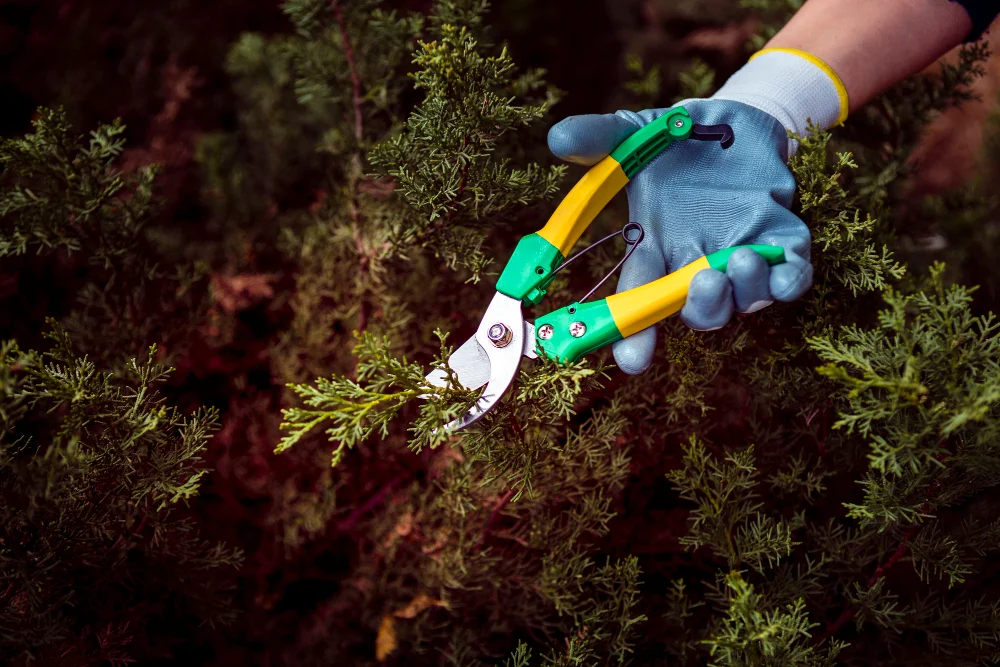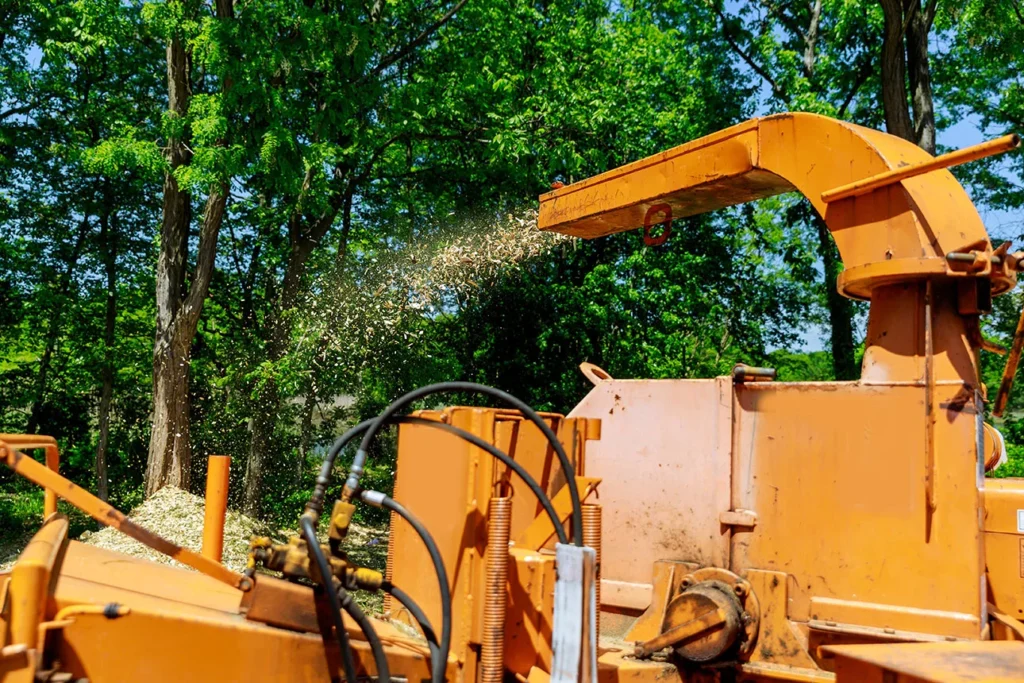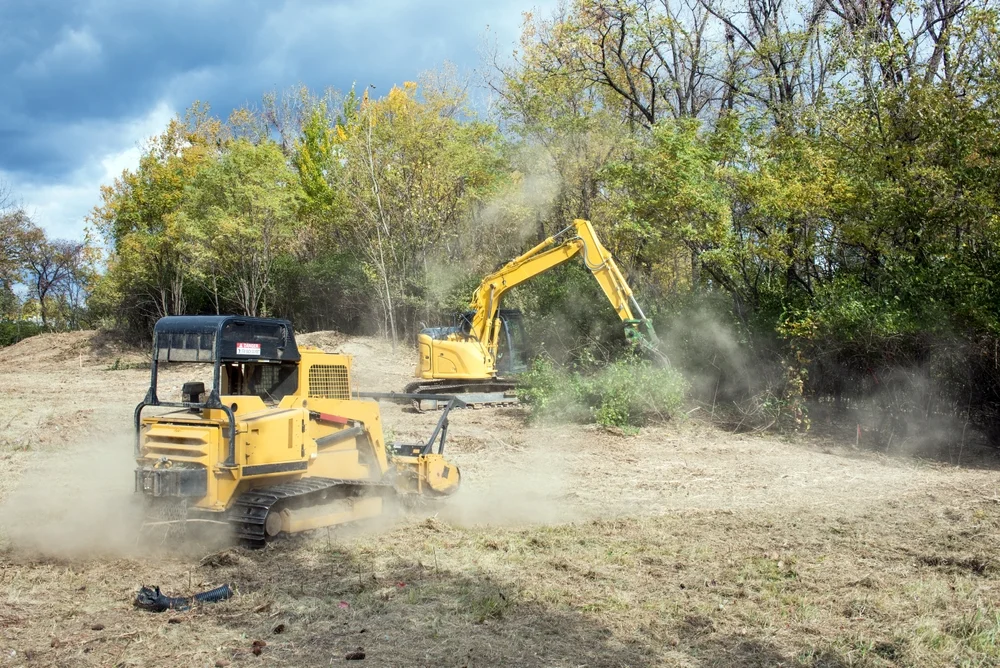Modern forestry operations increasingly rely on heavy-duty mulchers to transform land management practices. These powerful machines efficiently process trees, brush, and undergrowth into beneficial mulch while addressing critical challenges like wildfire prevention and soil conservation. Unlike traditional clearing methods that require multiple machines and disposal steps, mulching accomplishes everything in one pass. This guide details professional techniques for operating mulchers in diverse forest conditions, from initial site assessment to post-operation maintenance.

Thorough preparation separates successful mulching projects from costly mistakes. Unlike agricultural or landscaping work, forestry environments present unpredictable challenges that demand a strategic and highly methodical approach.
Operators working in forested areas often face dense vegetation, unstable ground conditions, and environmental regulations that can impact the work timeline or equipment choice.
Preparing properly not only maximizes operational efficiency, but it also protects expensive machinery and reduces risk exposure for both personnel and the environment.
Professional operators begin each project with a full walk-through of the terrain to map out cutting paths, flag hazards, and assess access points. This ground-level reconnaissance is not optional in forestry work, where the cost of overlooking a hidden rock bed or protected wetland can mean broken equipment or legal liability.
In commercial forestry work, this step is increasingly supported by digital terrain mapping tools such as drone surveys and GPS-enabled topographical overlays, which allow teams to plan with precision and avoid rework or violations.
Forestry conditions vary widely depending on the region, tree species, and soil type, which makes machine setup a critical variable in operational success. A generic skid steer with a universal mulcher head might suffice for brush clearing, but it will quickly reach its limits in deep-wooded operations involving large timber or uneven ground. Use the comparison in key differences in drive systems for industrial mulchers to match belt, direct, or gearbox layouts to your stand and carrier.
For example, mixed hardwood stands demand high-flow hydraulics (above 30 GPM) and mulching heads fitted with staggered tooth patterns to reduce strain on the rotor and maintain even cutting. When operating in wet or marshy forest soils, the weight distribution of the carrier must be carefully evaluated, wider tracks or flotation tires help distribute weight and minimize rutting, which is particularly important on protected land where soil disturbance must be kept to a minimum.
Operators should always consult OEM specifications to adjust PSI settings, rotor speed, and flow rate according to the vegetation density and species present. Cutting hardwoods at softwood settings is one of the most common causes of underperformance and premature equipment wear in commercial forestry work.
In forestry, safety lapses are rarely minor. Heavy-duty mulchers generate tremendous torque, noise, and vibration, often in remote locations with limited access to emergency services. A structured and repeatable safety inspection routine must be performed before each shift to identify issues that may not be visible during operation. Reference the step-by-step checks in pre-operation checks before large-scale mulching missions to standardize your routine.
Prior to starting each shift, complete these verifications:
Though these checks typically take under 15 minutes, they are responsible for preventing a majority of the mechanical failures and operator injuries that occur in forest mulching jobs. In high-volume commercial work, this verification is often logged digitally to meet insurance and regulatory documentation standards.
Achieving high-efficiency results in forestry mulching requires more than just operating a machine, it demands technical expertise, an understanding of environmental dynamics, and precise adaptation to terrain variables.
Unlike light land clearing or residential work, forestry applications involve larger biomass volumes, steeper gradients, and higher-value vegetation.
Professional operators must therefore apply specialized cutting techniques that optimize performance, extend equipment lifespan, and maintain compliance with forestry standards.
When executed correctly, these practices allow crews to meet production targets while avoiding costly repairs, safety risks, or ecological disruption.

Professional mulcher operators rely on well-structured cutting strategies tailored to forest topography and project objectives. On moderately inclined slopes, the most effective technique consists in working in concentric circles, progressing gradually uphill.
This method ensures the mulch remains evenly distributed, avoiding downhill flow that could accumulate and obstruct the cutting deck.
When establishing firebreaks, operators often apply straight, parallel passes with approximately 20 percent overlap, maximizing coverage and reducing combustible material.
Downhill cutting should be avoided, as it encourages debris build-up that can compromise both efficiency and equipment safety.
In forestry applications, encountering large-diameter trees is common, particularly when clearing mixed hardwood stands. These mature specimens require careful handling to prevent equipment overload and ensure clean, uniform mulching.
This process minimizes mechanical stress on the mulcher and ensures consistent chip size. By avoiding full-trunk feeds, which often lead to rotor stalls or hydraulic surges, the operator also protects the integrity of the machine’s cutting teeth and drive system. Uniform segment processing leads to homogeneous mulch, which is particularly beneficial for soil conditioning and erosion control on reforested lands.
The quality of mulch produced is not just a cosmetic concern, it directly impacts land restoration outcomes, erosion resistance, and fire prevention. In forestry mulching, professionals monitor the final mulch characteristics closely to assess both performance and compliance with project standards.
If these benchmarks aren’t met, it often signals suboptimal rotor speed or excessive ground speed. Operators should then fine-tune their settings, adjusting feed pressure, deck height, or cutting speed. Achieving the right mulch quality doesn’t just enhance the visual outcome, it improves soil retention, reduces regrowth, and ensures the mulching process meets professional forestry standards.
Operators looking to tie chip quality to production and machine response can use the benchmarks in what makes a mulcher high performance in the field.

Forestry environments present a variety of obstacles that require operators to adapt their procedures carefully to ensure both safety and efficiency.
Each condition, whether it is steep slopes, rocky terrain, or wet weather, poses distinct risks and operational challenges that can affect machine performance and operator safety.
Recognizing these challenges and adjusting techniques accordingly is what distinguishes experienced mulching professionals from amateurs, allowing them to optimize productivity while minimizing equipment wear and environmental impact.
Operating heavy-duty mulchers on slopes exceeding 30 degrees demands specific strategies to maintain stability and control.
It is crucial to position the mulcher so it moves across the slope rather than straight up or down, which reduces the risk of tipping or loss of traction. When available, winch assists provide additional security, helping to stabilize the machine on difficult grades.
Because traction is reduced on steep terrain, ground speed should be decreased by approximately 40 percent compared to flat terrain operations. Operators should also schedule regular breaks to inspect track tension and check hydraulic fluid levels, as continuous strain can lead to mechanical failure.
These steps help prevent dangerous slippage and reduce wear on critical components, ensuring the mulcher performs reliably in challenging conditions.
Working in areas with visible rocks or concealed boulders presents a significant threat to cutting tools and machine components.
To mitigate damage, operators should first install reinforced skid plates beneath the mulcher, which protect the underside from impact and abrasion.
Upon striking rocks, it is advisable to reduce the rotor speed by 25 percent, which limits the stress on teeth and the rotor assembly, extending their service life.
Additionally, after any impact, operators must perform immediate inspections of cutting teeth to detect and address damage early.
When working in areas with surface rocks or hidden boulders:
This cautious approach can increase the lifespan of cutting tools by up to three times in abrasive, rocky conditions, reducing downtime and maintenance costs.
Damp or wet vegetation creates the risk of material buildup inside the mulcher, which can clog the rotor housing and reduce cutting efficiency.
Using open-deck mulcher designs significantly improves the machine’s ability to handle wet material by allowing better debris flow and reducing clogging.
Operators should plan cleanout breaks every 45 minutes to remove accumulated debris and maintain smooth operation. Applying a non-stick coating to the rotor housing between projects also helps prevent buildup and facilitates faster cleanouts. For cold starts and power recovery in freezing seasons, use the routines in cold weather performance and power loss prevention tips.
These measures maintain productivity even after rain or in areas with high humidity, preventing costly interruptions and preserving machine longevity.

Consistent care of heavy-duty mulching equipment is essential to ensure long-term reliability and avoid unexpected downtime.
Forestry applications, due to the rugged environment and dense vegetation, tend to accelerate wear and tear significantly more than other mulching contexts.
Without diligent maintenance, the investment in these specialized machines can quickly degrade, leading to costly repairs and loss of productivity.
Establishing clear post-operation routines tailored to forestry work maximizes machine uptime and preserves performance.
shutting down the mulcher, dedicating at least 30 minutes to thorough cleaning is critical to prevent buildup that could impair future operations. Focus on key areas prone to debris accumulation, including:
Add these tasks to simple maintenance checklists so crews log temperatures, tension, and cleanouts the same way every shift.
If left unchecked, accumulated vegetation and dirt create moist environments that accelerate corrosion and can lead to premature failure of vital components. Regular cleaning after each shift is a small investment of time that greatly extends equipment life.
The cutting teeth and related components demand particular attention during forestry mulching, as the abrasive environment quickly wears these parts down.
Rather than waiting for teeth to fail completely, implement a systematic rotation schedule that replaces teeth once they reach approximately 50 percent wear.
This approach minimizes the risk of damage spreading to the rotor or other components. Use torque wrenches for all tooth installations, since improper tightening causes around 60 percent of premature tooth loss.
Maintaining detailed maintenance logs tracking tooth replacement intervals allows operators to predict future needs, schedule repairs proactively, and reduce unscheduled downtime.
Proper preservation between forestry projects is essential to safeguard heavy-duty mulchers from both environmental exposure and mechanical wear. Taking deliberate steps during idle periods minimizes deterioration caused by moisture, rust, and component fatigue, ultimately protecting your equipment investment over the long term.
Between projects, take these steps to protect your investment:
These proper storage and preservation practices can extend the equipment’s operational lifespan by two to three years, representing substantial savings in the demanding context of forestry mulching.
When implemented correctly, professional mulching techniques deliver transformative benefits for forest management, combining efficiency, environmental care, and equipment longevity. The success of forestry mulching depends not only on using heavy-duty machines but also on thorough preparation, adapting techniques to specific terrain and vegetation, and maintaining equipment rigorously.
The combination of proper preparation, adapted operating methods, and disciplined maintenance produces measurable improvements, including:
These outcomes position heavy-duty mulchers as indispensable tools for modern forestry operations. By mastering these practices, crews not only achieve superior operational results but also contribute to sustainable forest management, balancing productivity with environmental protection and equipment preservation.

Operating heavy-duty mulchers on slopes exceeding 30 degrees demands specific strategies to maintain stability and control.
It is crucial to position the mulcher so it moves across the slope rather than straight up or down, which reduces the risk of tipping or loss of traction. When available, winch assists provide additional security, helping to stabilize the machine on difficult grades.
Because traction is reduced on steep terrain, ground speed should be decreased by approximately 40 percent compared to flat terrain operations. Operators should also schedule regular breaks to inspect track tension and check hydraulic fluid levels, as continuous strain can lead to mechanical failure.
These steps help prevent dangerous slippage and reduce wear on critical components, ensuring the mulcher performs reliably in challenging conditions.
Working in areas with visible rocks or concealed boulders presents a significant threat to cutting tools and machine components.
To mitigate damage, operators should first install reinforced skid plates beneath the mulcher, which protect the underside from impact and abrasion.
Upon striking rocks, it is advisable to reduce the rotor speed by 25 percent, which limits the stress on teeth and the rotor assembly, extending their service life.
Additionally, after any impact, operators must perform immediate inspections of cutting teeth to detect and address damage early.
When working in areas with surface rocks or hidden boulders:
This cautious approach can increase the lifespan of cutting tools by up to three times in abrasive, rocky conditions, reducing downtime and maintenance costs.
Damp or wet vegetation creates the risk of material buildup inside the mulcher, which can clog the rotor housing and reduce cutting efficiency.
Using open-deck mulcher designs significantly improves the machine’s ability to handle wet material by allowing better debris flow and reducing clogging.
Operators should plan cleanout breaks every 45 minutes to remove accumulated debris and maintain smooth operation. Applying a non-stick coating to the rotor housing between projects also helps prevent buildup and facilitates faster cleanouts. For cold starts and power recovery in freezing seasons, use the routines in cold weather performance and power loss prevention tips.
These measures maintain productivity even after rain or in areas with high humidity, preventing costly interruptions and preserving machine longevity.
Consistent care of heavy-duty mulching equipment is essential to ensure long-term reliability and avoid unexpected downtime.
Forestry applications, due to the rugged environment and dense vegetation, tend to accelerate wear and tear significantly more than other mulching contexts.
Without diligent maintenance, the investment in these specialized machines can quickly degrade, leading to costly repairs and loss of productivity.
Establishing clear post-operation routines tailored to forestry work maximizes machine uptime and preserves performance.
shutting down the mulcher, dedicating at least 30 minutes to thorough cleaning is critical to prevent buildup that could impair future operations. Focus on key areas prone to debris accumulation, including:
Add these tasks to simple maintenance checklists so crews log temperatures, tension, and cleanouts the same way every shift.
If left unchecked, accumulated vegetation and dirt create moist environments that accelerate corrosion and can lead to premature failure of vital components. Regular cleaning after each shift is a small investment of time that greatly extends equipment life.
The cutting teeth and related components demand particular attention during forestry mulching, as the abrasive environment quickly wears these parts down.
Rather than waiting for teeth to fail completely, implement a systematic rotation schedule that replaces teeth once they reach approximately 50 percent wear.
This approach minimizes the risk of damage spreading to the rotor or other components. Use torque wrenches for all tooth installations, since improper tightening causes around 60 percent of premature tooth loss.
Maintaining detailed maintenance logs tracking tooth replacement intervals allows operators to predict future needs, schedule repairs proactively, and reduce unscheduled downtime.
Proper preservation between forestry projects is essential to safeguard heavy-duty mulchers from both environmental exposure and mechanical wear. Taking deliberate steps during idle periods minimizes deterioration caused by moisture, rust, and component fatigue, ultimately protecting your equipment investment over the long term.
Between projects, take these steps to protect your investment:
These proper storage and preservation practices can extend the equipment’s operational lifespan by two to three years, representing substantial savings in the demanding context of forestry mulching.
When implemented correctly, professional mulching techniques deliver transformative benefits for forest management, combining efficiency, environmental care, and equipment longevity. The success of forestry mulching depends not only on using heavy-duty machines but also on thorough preparation, adapting techniques to specific terrain and vegetation, and maintaining equipment rigorously.
The combination of proper preparation, adapted operating methods, and disciplined maintenance produces measurable improvements, including:
These outcomes position heavy-duty mulchers as indispensable tools for modern forestry operations. By mastering these practices, crews not only achieve superior operational results but also contribute to sustainable forest management, balancing productivity with environmental protection and equipment preservation.
“After 15 years in forestry operations, I’ve seen mulching technology revolutionize our industry. The right machine operated with proper techniques can accomplish in one day what used to take a week – while leaving the land healthier than we found it.”
Mulching shows clear advantages over manual clearing for projects exceeding 2 acres. The break-even point typically occurs at 5+ acres due to equipment mobilization costs.
Unlike burning, mulching works during fire bans, eliminates smoke issues, and provides immediate fuel reduction without waiting for piles to dry.
Yes – the mulch layer actually improves seedling survival rates by 20-30% compared to bare soil, according to USDA Forest Service studies.
While 30 degrees is the practical limit for most equipment, specialized tracked mulchers with winch assists can work safely up to 40 degrees.
Expect to replace carbide teeth every 80-120 machine hours when processing mixed hardwoods. Softer conifers may extend this to 150 hours.
Proper technique minimizes this risk. Always process invasive plants last, then thoroughly clean the machine before moving to new sites.
OSHA requires ROPS/FOPS training, while many states mandate additional wildfire certification for fuel reduction work.
Heavy rain can reduce output by 30-50%, while moderate snow actually improves traction on slopes without significantly impacting cutting.
While possible, we recommend leaving 2-3 inches of stump to avoid soil contamination of the cutting chamber and premature wear.
Modern enclosed-cab mulchers operate at 85-90 dB – equivalent to heavy truck traffic. Open-deck units reach 95+ dB requiring mandatory hearing protection.
Our team of certified mulching specialists can help you:
Contact us for a free consultation or site evaluation.
To provide the best experiences, we use technologies such as cookies to store and/or access device information. Consenting to these technologies will allow us to process data such as browsing behavior or unique IDs on this site. Failure to consent or withdrawing consent may adversely affect certain features and functions.